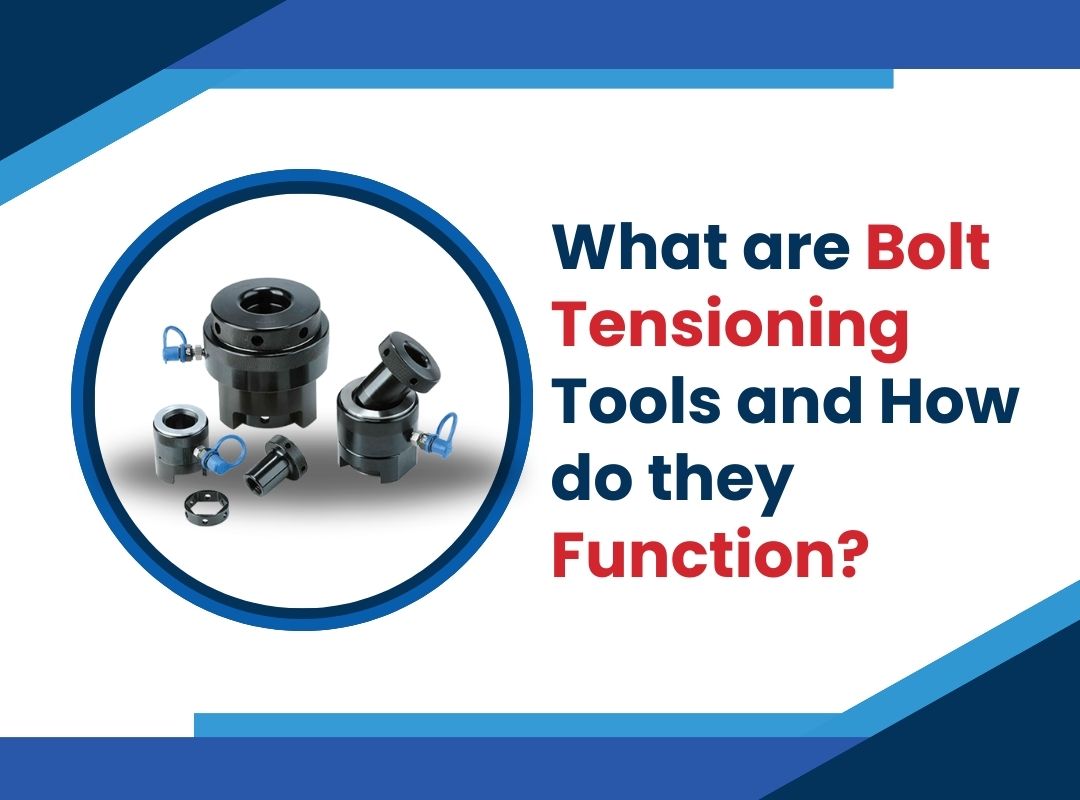To quickly tighten the large diameter bolts, Hydraulic Bolt Tensioning Device are used. These tools don’t use torque, and they don’t need any forceful turning of the bolt or nut using flogging spanners, or impact wrenches. In this article, we will talk about what hydraulic tensioning tools are and how they function.
Hydraulic Bolt Tensioning Tools
A hydraulic bolt tensioner is nothing but an annular jack that fits over the bolt and nut to tighten it. This jack has to be at least one diameter longer to fit the bolt tensioning tool which pushes against the bolted joint and pulls the bolt’s end.
When a force produced by the jack is directly applied to the bolt end, a tension that is equal to the load generated by the jack is developed in the bolt shank. Using the tension applied by the jack, the nut can be turned with zero torque until it is tight.
Then the load applied by the jack is relaxed and a high percentage depending on the bolt’s length, and its diameter continue to have the shank of the bolt.
What are the Components of a Bolt Tensioning Tool?
Different components help the bolt tensioning tool work appropriately. They are
Puller
The puller consists of an internal thread to suit the bolt. It has a nose that helps to locate the cylinder’s center and onto the bolt. Its work is to transfer the force that is developed by the cylinder into the tension of the bolt.
Cylinder
The cylinder is an annular hydraulic jack through which the hydraulic bolt and puller pass through its center. It comes with a recess at the base to connect the bridge. To connect the cylinder with the hydraulic hoses, they are provided with quick disconnect nipples.
Bridge
The bridge is an important component that supports the cylinder over the socket, bolt, or nut. There is a circular groove added to fit a socket retaining ring which helps in retaining the socket within the bridge. The bridge has a cut-out in the front that allows access to the socket with a tommy bar to turn the nut when the bolt is tensioned.
Socket
There is a socket present that fits perfectly over the hexagon nut and inside the bridge.
Bolt and Nut
The thread must protrude through the nut so that the tensioner tool can screw onto and apply the bolt tension. If the bolts and nuts are made of good quality materials, the tensioning operation is quicker and more accurate.
Working of the Hydraulic Bolt Tensioning Tools
Now that you know about the different parts of a bolt tensioning tool let’s see about the working.
First, you must ensure that there is at least one bolt diameter of the length of thread above the nut so that the puller can do its job.
With the help of flexible hoses and self-sealing quick-connect couplings, a hydraulic ring main is formed by connecting the bolt tensioning tools together. Here the ring main and the tensioning tools are pressurized using an electric or air-driven or hand pump.
Bolt tensioners have a working pressure of 1500 bar which is sufficient load to seal a standard flange with RTJ gaskets or spiral wound gaskets.
That’s all about what the hydraulics bolt tensioning tools are. These bolt tensioning tools provide faster and more accurate results that help maintain joint integrity and promise safety on sight.


